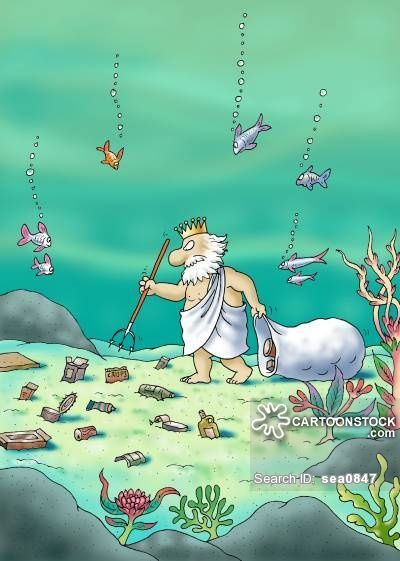Pure Water Occasional, February 2, 2019 |
The Colorado River basin is in its 19th year of drought –and last year Colorado River flows dropped to the lowest levels ever recorded.
Recent water news was filled with stories of water main breaks due to record cold weather.
In Arizona, four women were found guilty of a misdemeanor for leaving water and food in a desert area for migrant border crossers.
President Donald Trump signed legislation authorizing a new Coast Guard bill from Congress that includes the first-ever comprehensive plan to regulate ballast water as a pollutant. The bill calls for ballast water discharge to be regulated under the Clean Water Act, with enforcement by the Coast Guard. Ballast water is blamed for the spread of many invasive species that hitchhike from overseas ports to U.S. ports, including across the Great Lakes — things like zebra mussels, goby, ruffe and spiny water fleas. The ballast measures were first ordered by a federal court a decade ago but have been held up in Congress as ship owners and environmental groups battled over the costs of action and inaction.
During the first three weeks of the Flint, Michigan water crisis, it is estimated that somewhere between 31 and 100 million empty water bottles were generated as waste. Flint should have been buried in plastic by the time the crisis ended in 2017. This Science Daily article explains why it wasn't.

The New York City Department of Environmental Protection Commissioner has announced the launch of the 33rd annual Water Resources Art and Poetry Contest. Details are here.
The Rhine, perhaps Europe's most important river, is slowly going dry. The river is fed by glaciers and rain but alpine ice flows shrank 28 per cent between 1973 and 2010 - the date of the most recent in-depth study by the Swiss government. The water level of the Rhine is clearly getting lower every year.

The toxicity of golf balls
Modern golf balls are made of a polyurethane elastomer shell and a synthetic rubber core. Manufacturers add zinc oxide, zinc acrylate and benzoyl peroxide to the solid core for flexibility and durability. These substances are acutely toxic to marine life.
A surprising number of golf balls end up in the ocean and in lakes and streams.
When golf balls are hit into a body of water, they immediately sink to the bottom. No ill effects on local wildlife have been documented to date from exposure to golf balls, but as the balls degrade and fragment in the water, they may leach chemicals and microplastics and sediments into the water. Moreover, if the balls break into small fragments, fish, birds or other animals can ingest them.
It is estimated that at the popular courses like Pebble Beach golfers may lose over 100,000 balls per year to the surrounding environment.
In other water news,
Newark is recording lead levels in its municipal water described variously as "jaw dropping" and "knock your socks off" high.The city's mayor has appealed to President Trump to drop his focus on building a wall and place it on helping Newark and other struggling US cities get rid of ancient infrastructure.
As we become increasingly aware of the role weather conditions play in water quality, the nation awaits the arrival of Groundhog Day.
|
Because weather plays such an important role in water quality, Groundhog Day should rank right up there with National Garden Hose Day as one of the planet’s most important holidays. Water quality and availability are only partially within our control. Water quality is related to the weather in a complex and partially incomprehensible web of cause and effect relationships. We know, for example, that wildfires and floods have an immense effect on water quality and availability, but when it comes to Groundhog Day, we aren’t sure if extended winter helps or hurts. And knowing if early spring in Massachusetts is good or bad for water quality in Arizona is way beyond our reckoning.
Groundhog Day started in Europe as a Christian holiday involving candles, Candlemas Day. As with other holidays, its significance has been trivialized.
Because of the Bill Murray movie, most Americans believe that there is only one weather-forecasting Groundhog. Actually, spread across the US and Canada there are many communities that honor their Groundhog as the True Groundhog. The commemorative statue above honors the late Wharton Willie of Wharton, Ontario. Whartonites consider Punxsutawney Phil a furry imposter.
So as we contemplate the prognostications of the Groundhog of our choice, we should remind ourselves that water is a gift to be regarded with reverence and that what is given can also be taken away.
Let the Groundhog Day festivities begin!
|
Talking About Water on the Phone
by Gene Franks
|
When we say phone sales at Pure Water Products, we don’t mean telemarketing or cold calling. All phone work here is incoming. When the phone rings, we answer it and do our best to help the caller, whether he or she wants to buy something, has a complaint, needs help installing or trouble-shooting a product, or just wants information. The only people we call are people who have asked us to call them.
Phone work is the hardest and scariest part of our business, because when the phone rings it can be anyone with any kind of question or problem. People who answer the phone learn quickly that you can’t know everything and that when you don’t know the answer to a question the best thing to do is say that you don’t know and offer to get the information and call or email back. We say “I don’t know” a lot.
Here are some examples of things we get most questions about–not in order of frequency.
- Removing chloramines from city water.
- The kinds of plastics tubing and filter housings are made of, and don’t we have any made of glass or stainless steel.
- Removing iron, manganese, and/or hydrogen sulfide from well water.
- Removing fluoride and arsenic from water.
- Removing the newer contaminants like GenX.
- Adding minerals to reverse osmosis water.
- What are reverse osmosis tanks made of.
- Something the caller just heard on the news.
- Raising pH of well water and or reverse osmosis water.
- Salt-free “softeners.”
- Spot-free car washing (my own least favorite topic).
- Sizing everything: whole house city water filters, iron filters, water softeners, retention tanks, and a lot more.
- Troubleshooting undersink reverse osmosis. Most frequent question: Why isn’t my RO unit making enough water? And, how often should I change the membrane?
- Pressure drop questions about whole house filters.
- Country of origin of products. (There is much interest now in “made in USA” products, and they’re getting harder and harder to find. “Assembled in USA” is often offered as a substitute.)
- Help in identifying and buying replacement parts.

No, sir, I haven't seen the video that proves you can't live past age 37 without a machine that makes alkaline water. Could you send me a link?
We’re proud that we answer the phone six days a week during Texas business hours and usually a couple of hours after. If you’ve tried calling other internet water treatment sources you know that we’re the exception to the usual. And people also tell us that we’re exceptional in that you can get information from us without a sales pitch.
This is a hard business and we aren’t perfect, but we do our best. Keep in mind that there isn’t a college course about how to answer questions about water treatment, so the staff who answer our phones learn to talk on the phone by talking on the phone. By winging it. It’s like learning to swim by jumping out of the boat. Also keep in mind that our phone sales people are mainly occupied with office management, website design and maintenance, building products, managing inventory, keeping records, packing packages, and a lot more. When you call, you’re actually talking with someone involved in the business, not a phone bank person who only knows how to take orders.
So be patient with us. Not a single one of us has a degree in phone sales.
|
Simple Design, Low Cost, Outstanding Performance |
Using basic products to create a high performance result, the whole house treatment array shown above, a customer installation at Lake Livingston, TX, features three 4.5" X 20" cartridge units followed by a Watts OneFlow (ScaleNet) tank. The water stream passes through the 5 micron sediment filter (right canister) then splits in half to to go through two carbon canisters, then comes together to pass through the Watts salt-free conditioner. The two-cartridge carbon split is used to allow more residence time with the carbon for enhanced chemical removal and decreased pressure drop. Homes with up to two or three people will normally do fine with a single carbon filter.
The system needs no drain connection, no electricity, no water for regeneration, and under most conditions only once-a-year attention. The simple design is applied most often to city-water chlorine and/or chloramine removal, but because of the wide range of filter cartridges available for the standard-sized housings, it can be modified to remove iron, increase pH, or remove lead. More information.
|
Removing Hydrogen Sulfide From Well Water
|
The “rotten egg” odor that people complain about in well water can come from many sources, but it is most commonly caused by “sulfur reducing” bacteria that give off a foul-smelling gas. The bacteria themselves are harmless–they don’t cause disease–but the gas they produce can cause horrible odors and smelly black staining in pipes and appliances.
In some parts of the country, most notably Florida, where hydrogen sulfide is common and very severe, the standard treatment is to spray the water into an open air tank, allow the noxious gas to escape into the atmosphere, then use a secondary pump to send the water from the tank into the home. Tanks of this type are expensive, need lots of space, and are subject to freezing in cooler climates. Therefore, another type of treatment known as “precipitation/filtration” is preferred in most areas.
With this method, an “oxidizer” causes the trapped hydrogen sulfide gas to “precipitate” to elemental sulfur, then the sulfur is trapped in a filter. It’s a two-step process. The filter is most often carbon. Filter carbon, especially a specialty carbon called “catalytic carbon,” can perform both steps–precipitation and filtration–but unless the amount of H2S (hydrogen sulfide) is small, the carbon wears out quickly and has to be replaced. However, when the carbon is helped by a more powerful “oxidizer,” the carbon can last a very long time and the process can be very successful. Many “oxidizers” can cause the precipitation of the gas: air, chlorine, hydrogen peroxide, potassium permanganate, ozone, and more. For residential users, the most practical and the most easily maintained are aeration (air) and chlorination.
A full treatment system with chlorine looks like this–
1. A dry pellet chlorinator — a device that drops chlorine pellets into the well itself– followed by a carbon filter, or
2. A chemical feed pump, installed before the pressure tank, that feeds liquid chlorine (household bleach) into the water line. After the pressure tank, you must have a retention tank–usually 80 to 120 gallons–to give the chlorine time to work. After the retention tank, a carbon filter.
A full treatment system with aeration looks like this —
1. An “Aer-Max” system, which consists of a 10″ X 54″ treatment tank that is fed by a small air compressor. It is installed after the pressure tank, and it is followed by a carbon filter, or
2. A “single tank aerator” installed after the pressure tank. It is a backwashing filter with a special control valve that draws in air to “oxidize” the H2S so that it can be removed by the filter carbon in the bottom 2/3 of the tank.
Here are page links that show the various strategies. Many have installation diagrams.
The carbon filter used in any of these system (other than the single tank aerator) can be either a “backwashing” tank-style filter or a carbon block filter. If iron is present in the water, a backwashing filter must be used because a carbon block filter would be clogged quickly with iron.
Catalytic carbon is the carbon of choice with hydrogen sulfide, but any good carbon filter will work after proper oxidation.
Here are some places on our website to look for carbon filters —
Often the hard part of designing these filters is choosing and sizing the carbon filters. Do not hesitate to call or email us for help.
|
Farms Are Poisoning Our Drinking Water
|
Is the way we grow food killing us?
U.S. farms, more productive than ever, are poisoning drinking water for rural Americans.
One in seven Americans drink from private wells, according to the U.S. Geological Survey. Nitrate concentrations rose significantly in 21% of regions where USGS researchers tested groundwater from 2002 through 2012, compared with the 13 prior years. The greatest increases were in agricultural areas. More recent sampling shows the pattern is continuing, at a potentially greater rate.
Meanwhile, more than 16% of groundwater from wells sampled between 2002 and 2012 topped the federal nitrate limit of 10 parts per million, versus 12% in the 1990s. The percentage above the limit fell slightly in the wells sampled after 2013 but remained elevated.
One farm-economy byproduct is manure, which farmers spread across millions of acres and contains nutrients such as nitrates that researchers have associated with birth defects, thyroid problems, cancer and a potentially fatal condition in infants. Another byproduct is decades-old water, laden with nitrates from a nationwide run-up in chemical-fertilizer usage, that is sinking closer to drinking water in some areas, says Bruce Lindsey, a USGS hydrologist.
|
The Water Quality Association is unveiling this year a 70-year commemorative logo highlighting the organization's role as the leading voice of the residential, commercial and industrial water treatment industry.
The nation's leading trade organization of water treatment professionals, the WQA started seven decades ago with the combining of two organizations, the Water Conditioning Association International (WCAI) and the Water Conditioning Foundation (WCF). In 1949, both organizations had been established and were representing manufacturers, suppliers and water treatment dealers industry wide. WCAI and WCF merged to form the Water Quality Association.
Today, WQA has 2,500 members across the globe who work to uphold the highest principles of fair dealing and professionalism in the water quality improvement industry. WQA supports research and has a product certification program and a much respected education program for water treatment professionals.
Pure Water Products has been a member of the national WQA since 1998 and we are also members of the very active Texas Water Quality Association. Twenty per cent of our staff hold national WQA CWS (Certified Water Specialist) certification and over half of our staff are trained and certified under the TCEQ (Texas Commission for Environmental Quality). That is probably why we are all so smart.
|
Places to visit on our websites |
Thanks for reading and be sure to check out the next Occasional!
|
|
|
|  | |